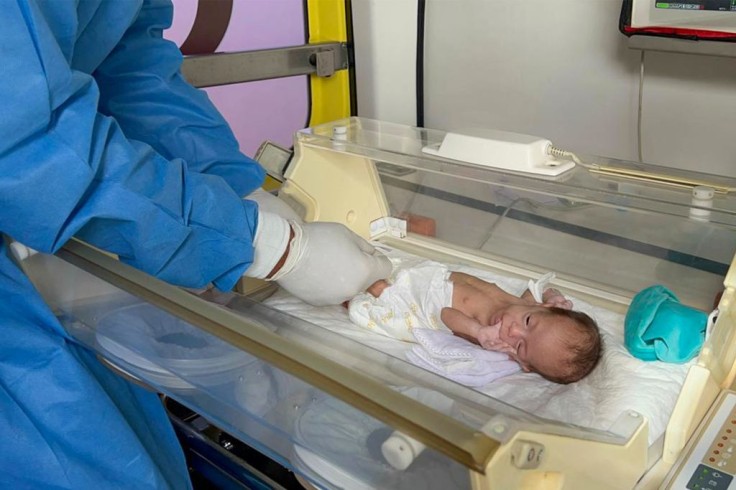
Premature twins in India were born with twin-to-twin transfusion syndrome and only reached 28 weeks of gestation.
The twins did not complete their development in their mother's womb and were instead nurtured in the neonatal intensive care unit.
Along with weighing very lightly at 750 grams, one twin was born paper white while the other was born with excess red blood cells.
Premature twins Twin-to-Twin Transfusion Syndrome,
The other twin was named Milana. Inside the womb, the twins developed acute twin-to-twin syndrome, where the two babies were sharing blood with one another.
Milana shared the placenta with her twin sister; she became the donor, and her twin is the recipient. This made Milana anemic and caused her sister have excess red blood cells and increased blood in her body.
Due to the syndrome, Milana lost a lot of blood in her system and was born paper white, according to her mother, Neha Kuduvalli, 34.
Neha stated that it was extremely painful for her child in the NICU, along with all the tubes connected to her child and being on oxygen support for more than one month. She added that Milana underwent blood transfusions six times during her two months in the hospital.
Neha shared that her daughter's hemoglobin would keep dropping, which would make the doctors add more blood to her.
Neha and her husband, Prashanth Desai K's other twin, unfortunately did not survive, who weighed 1.1 kg at birth. The couple shared that despite the slim chances of survival for their other daughter, they still held on hope and believed she would survive.
However, the other twin developed intracranial pressure, too much blood flow, which unfortunately bled in her brain, causing her organs to shut down. Neha added that when it was her time to go, they went to say their goodbyes and she looked very peaceful.
Survival of Premature Babies
When a baby is born at least three weeks before the expected 40-week due date, it's termed a premature birth-specifically before the 37th week of pregnancy. The classification of "premature" is further broken down into categories:
Extremely preterm (before 28 weeks)
Very preterm (28 to 32 weeks)
Moderate preterm (32 to 34 weeks)
Late preterm (34 to 37 weeks)
The timing of a premature birth significantly influences the potential interventions a baby might require.
The earlier the birth, the higher the likelihood of complications. Survival rates for premature babies vary with each gestational week.
Medical professionals often cannot pinpoint the exact cause of premature birth, and it's not always preventable.
Moreover, research on survival rates for preemies is broad and depends on factors such as country, maternal health, and the baby's birth weight.
However, it's reassuring to note that the survival rate for extremely preterm babies without neurodevelopmental problems has been improving since 2000.
A baby born after 28 weeks is categorized as "very preterm" but has a better starting point compared to those born just 2 to 4 weeks earlier.
This is because their vital organs, like the heart and lungs, are more developed. The University of Utah Health reports a survival rate of 80 to 90 percent at 28 weeks, with some clinical studies indicating even more promising rates of 94 and 98 percent.
Only 10 percent of babies born at 28 weeks face potential long-term complications, including breathing problems, infections, digestive issues, blood problems, kidney problems, and brain/nervous system problems like seizures.
Milana had a hole in her heart that was 2mm when she was born, it was a large size for a baby to have, considering her weight at that time. However, she is now 5.5 kg and the hole is now 1mm.
The doctors also told the family that as she grown old, the hole might become smaller and insignificant, giving the family hope for Milana.
